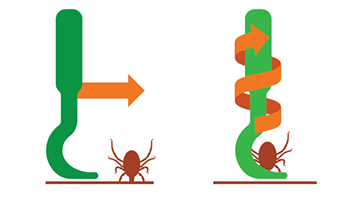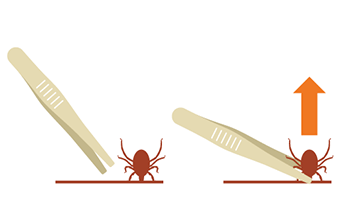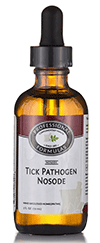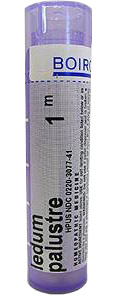Preventing & Treating Lyme Disease (Humans + Dogs)
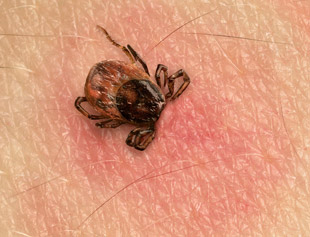
Once segregated to small regions of the US, Lyme disease is now rapidly spreading throughout the country. In fact, the CDC is claiming it is reaching epidemic numbers and is much more serious than most people realize. A recent study(1) estimates the medical insurance cost of treating Lyme disease to be in excess of $1 Billion each year in the US alone, yet many patients do not respond to traditional medicine and suffer the debilitating symptoms of chronic Lyme disease each day.
In this post, we're going to talk about a completely natural method of both preventing AND treating Lyme disease that is both inexpensive and simple to follow. Not only has it shown great success in completely healing Lyme, but you also won't need to expose yourself to pharmaceuticals that have a very poor rate of success. There are many confirmed cases of both people (and the pets they treat) fully recovering from Lyme in a remarkably short time period following this natural protocol. Let's get educated on what Lyme disease is and how we can get it. Then, let's talk about how to not only treat it, but also follow a prevention regimen that can protect both yourself and your furry friends from contracting it in the first place!
What Is Lyme Disease
 Lyme disease is a vector-borne disease, meaning that it is caused by an infectious bacteria transmitted to people by blood-sucking insects. In this case it is caused by a bacteria called borrelia burgdorferia, and transmitted to humans by the bite of an infected deer tick (also knows as the blacklegged tick - see image). To view the life cycle of the deer tick, click here.
Lyme disease is a vector-borne disease, meaning that it is caused by an infectious bacteria transmitted to people by blood-sucking insects. In this case it is caused by a bacteria called borrelia burgdorferia, and transmitted to humans by the bite of an infected deer tick (also knows as the blacklegged tick - see image). To view the life cycle of the deer tick, click here.
Not all ticks carry infectious diseases, and only the deer tick transmits Lyme disease. In most cases, the tick that transmits the disease is an immature (young) tick that is the size of a poppy seed, making it very difficult to find. Many Lyme disease sufferers had no idea they have even been bitten.
Hidden Epidemic
Let's look at some important statistics:
- There are roughly 300,000 new Lyme disease of reported cases logged each year. But as many cases go unreported, the real number is much higher with some experts estimating well over 1 million.
- Lyme disease is now reported in 49 of 50 states and 65 countries worldwide.
- Lyme disease is one of the fastest growing infectious diseases in the US, with numbers and geographic footprint growing rapidly. It is now a serious and important public health issue.
 Source: Bay Area Lyme Foundation
Source: Bay Area Lyme Foundation
In some states, the number of infected ticks found through studies spans the entire state. In California alone, 42 of 58 counties have infected ticks. But the amount of ticks in any given area can vary greatly. For example, one park may have an infestation of ticks carrying the culprit bacteria, whereas 2 miles away, ticks may be practically non-existent.
Know the symptoms
Because many of the symptoms of Lyme disease are benign and easy to miss in the early stages, they are dismissed as a cold or flu, age-related, or general wear and tear on the body. There is also an overlap with symptoms of other conditions and because it mimics other illnesses, doctors often do not consider Lyme disease as a possibility until it has become chronic.
Emily Adrion, researcher at Johns Hopkins University and lead author on a new Lyme disease study states that in the beginning states, Lyme is much more treatable, but the longer you go without treatment, the more serious the symptoms can become making it increasingly difficult to both identify and treat. Not only that, treatments are expensive and frequently harmful with many people not responding to antibiotics, or responding to the point that symptoms are relieved yet the disease is pushed into remission to later be triggered by illness or stress.
Signs and symptoms of Lyme disease can vary greatly, with some people more affected than others. Joints, nervous system, and skin are the most commonly affected:
Early signs & symptoms | Later signs & symptoms | |
|
|
Co-Infections & Other Tick-Borne Diseases
Compounding the problem, there are multiple co-infections that many people contract when bitten by a tick, as well as the Lyme itself. Lyme disease is also one of several other diseases that can be contracted from infected ticks. Others include:
- Anaplasmosis
- Babesiosis
- Bartonellosis
- Ehrlichiosis
- Rocky Mountain Spotted Fever
- Tularemia
- STARI (Southern tick-associated rash illness)
For more information about these diseases and their symptoms, click here.
Keep In Mind...
If you discover a tick on your body, don't panic! Keep in mind that even though Lyme disease cases are significantly on the rise, only a small percentage of tick bites lead to humans and pets contracting this or other diseases, however the longer the tick remains attached, the greater your risk of infection.
Preventing Lyme Disease
The best protection is prevention. Here are some simple and easy-to-follow steps to help protect yourself, your family, and your pets from tick-borne illnesses:
General Preventative Measures
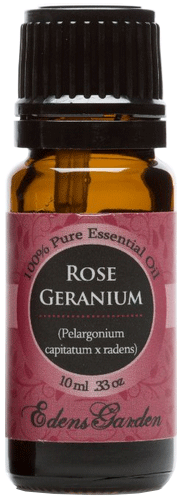
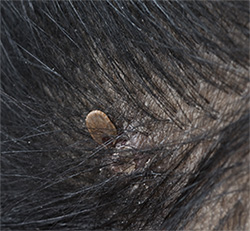 The quicker you remove the tick, the lower your risk of being bitten. Ticks often spend hours crawling around their host to find the "best" spot, so brushing them off before they attach is your best bet. Although they can chomp down on any spot, the following areas are favorites:
The quicker you remove the tick, the lower your risk of being bitten. Ticks often spend hours crawling around their host to find the "best" spot, so brushing them off before they attach is your best bet. Although they can chomp down on any spot, the following areas are favorites: Dogs and cats are just as susceptible to Lyme disease. Like children playing outside, pets can bring ticks indoors that hitch a ride and then land on couches, in beds, and just about anywhere in your home. Always use tick preventative measures on pets and check them often.
Dogs and cats are just as susceptible to Lyme disease. Like children playing outside, pets can bring ticks indoors that hitch a ride and then land on couches, in beds, and just about anywhere in your home. Always use tick preventative measures on pets and check them often.  The sooner you remove the tick the better. The longer the tick stays attached, the greater the chance for infection. It typically takes 24 hours or longer for an infected deer tick to pass on the Lyme disease bacteria from the time in attaches to its host. Unfortunately, other tick-borne diseases such as Rocky Mountain Spotted Fever can be transmitted within hours which is why timing is very important.
The sooner you remove the tick the better. The longer the tick stays attached, the greater the chance for infection. It typically takes 24 hours or longer for an infected deer tick to pass on the Lyme disease bacteria from the time in attaches to its host. Unfortunately, other tick-borne diseases such as Rocky Mountain Spotted Fever can be transmitted within hours which is why timing is very important. 